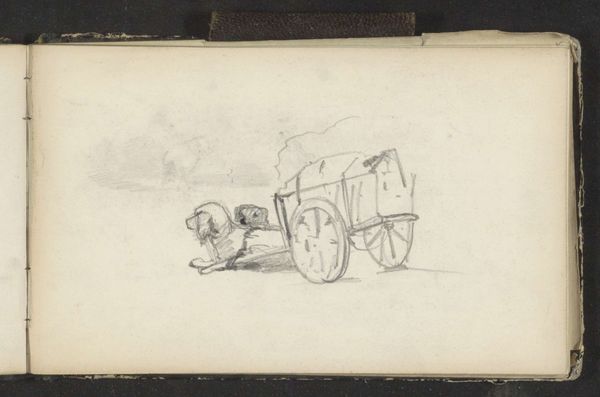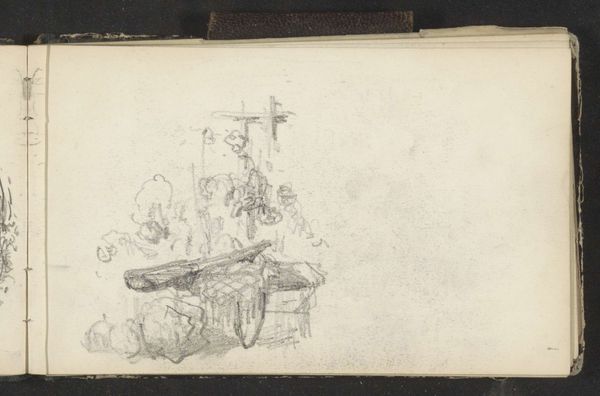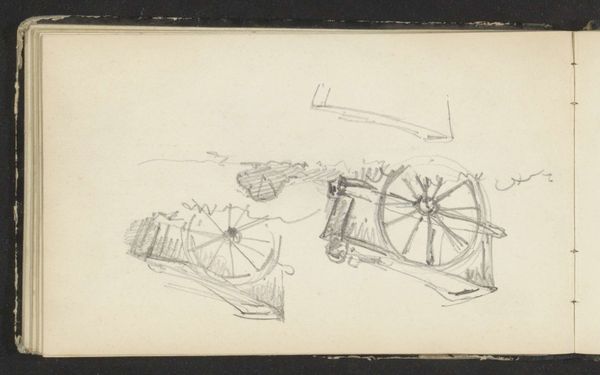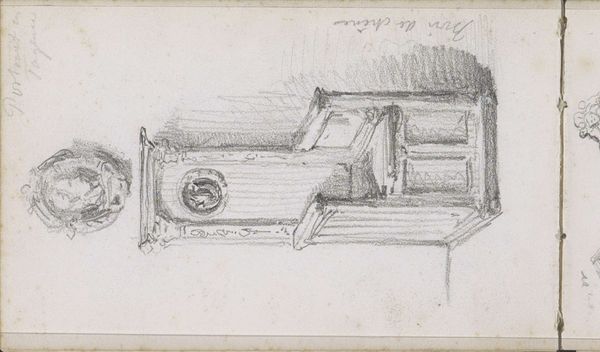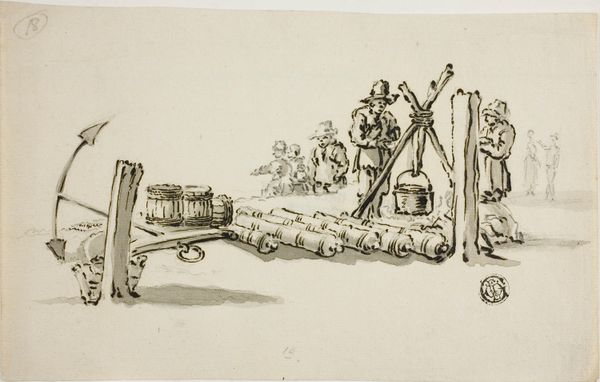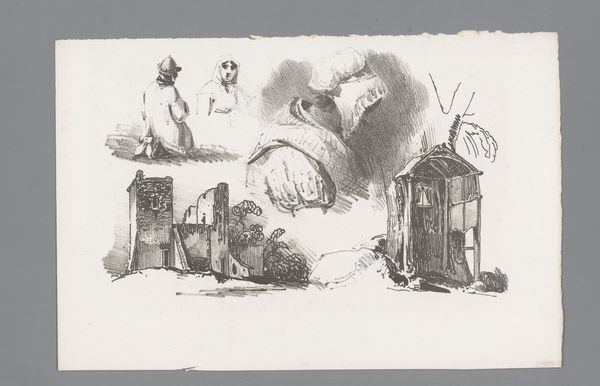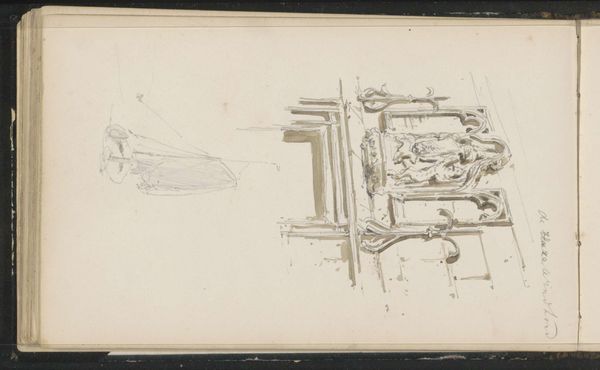
drawing, pencil
#
drawing
#
aged paper
#
toned paper
#
quirky sketch
#
sketch book
#
incomplete sketchy
#
hand drawn type
#
landscape
#
personal sketchbook
#
pen-ink sketch
#
pencil
#
sketchbook drawing
#
sketchbook art
#
realism
Copyright: Rijks Museum: Open Domain
Curator: This sketch, "Slijpsteen," by Maria Vos, created between 1834 and 1906, is part of a sketchbook held at the Rijksmuseum. It's rendered in pencil and ink on toned paper. Editor: Ah, the quiet hum of industry! It looks so solitary. All those scribbled lines, like hushed whispers caught on paper. There’s something almost mournful about it. Curator: Precisely. The choice of a grindstone is significant, reflecting a society grappling with industrial advancements while still deeply connected to manual labor. Vos, as a female artist during this period, would have observed these shifts with a unique lens, possibly contemplating the changing roles of labor and its impact on domestic life. Editor: Changing roles indeed. That lone grindstone, so earnestly sketched, suddenly seems charged. What stories would its user tell? Whose sweat turned that wheel? And now it just sits there, captured so intimately in the artist’s gaze. It makes you wonder about the grind of daily life. Was this about celebrating craft, or critiquing toil? Curator: I think it encapsulates both. Vos likely understood the inherent duality—the pride in skilled labor intertwined with its demanding nature. The sketchbook format suggests personal reflection. Consider the historical context: increasing mechanization, the burgeoning women’s movement. It positions this piece as a potential commentary on gendered labor practices. Editor: You're right. Knowing it's from a sketchbook gives it so much intimacy. You can almost feel her observing this everyday object, seeing the story etched into its form. It's not just about what's depicted; it's about *why* she chose to depict it. And those shadows? Ominous yet alluring, playing around the base. Like even mundane things carry depth if you just pay attention. Curator: It challenges us to consider those often-unseen contributions. By documenting such an object, Vos is subtly inserting labor into the art historical narrative, inviting us to broaden our understanding of value and worth. Editor: This humble drawing certainly offers food for thought. Curator: It highlights how the personal and political can merge.
Comments
No comments
Be the first to comment and join the conversation on the ultimate creative platform.




